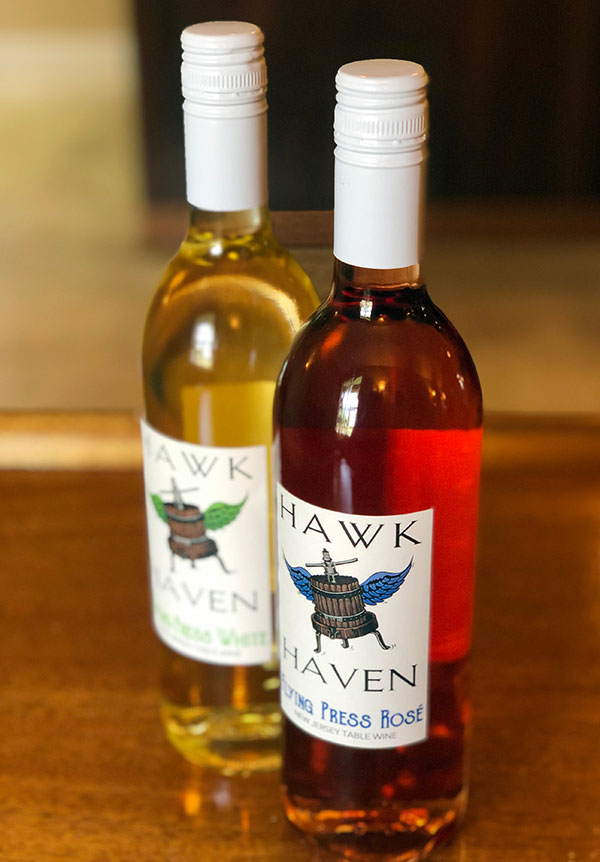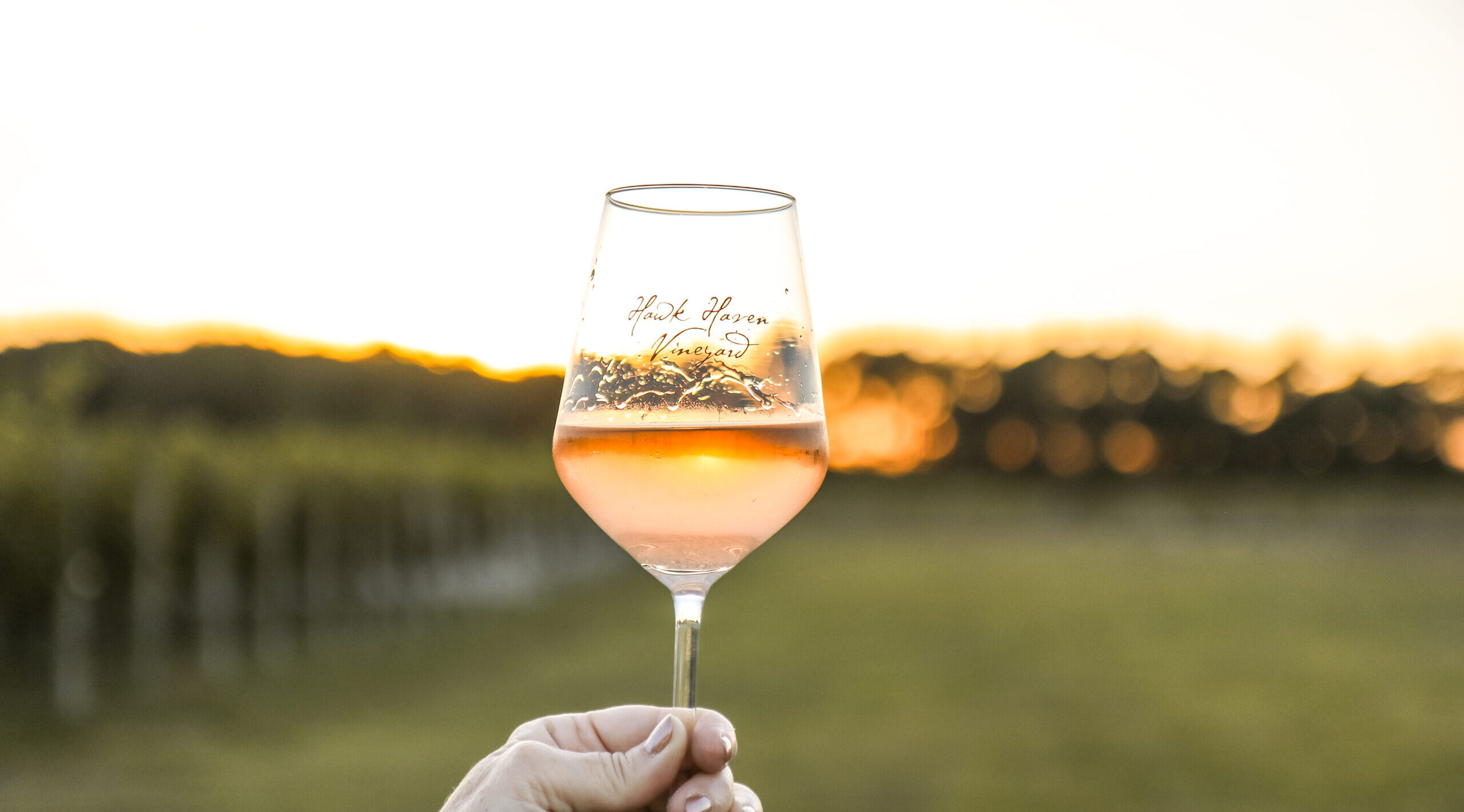
WANT SOME CLOSURE?

Opening a bottle of wine can sometimes be the hardest part of service. In some circumstances, every single detail matters – from the way you hold the bottle, to where you cut the foil, to the number of turns of the corkscrew! But while cork has become synonymous with wine, that has not always been the case. In fact, in the grand scope of wine history, sealing bottles with cork is a relatively new
progression. At Hawk Haven, we use a variety of different closures for our bottles. Let’s dive into why cork became popular, what cork even is, and different types of closures now on the market.
Bottle Me Up
Archaeologists have found evidence of wine production as far back as between 8000 B.C. and 4100 B.C. in Armenia. Various containers have been used to ferment and store wine, ranging from Georgian earthenware vessels coated in beeswax, to Egyptian amphora, to the wooden barrels of Gaul. It wasn’t until technology advanced into the 1600’s that glass bottles came more onto the scene. The coal furnace allowed for thicker glass to be produced. Before these bottles, the vast majority of wine lasted less than a year before turning to vinegar. The vast majority of wine was still stored and transported in barrels, but the transition was slowly changing over to the smaller storage vessels. By the nineteenth century, it was common practice. These glass bottles also created the ability to store wine long-term and age the beverage.
Ancient Romans had experimented with cork, oil-soaked rags, and many other materials to stop their amphorae. It was the popularity of the bottle that truly brought cork onto the main stage. While cork stoppers aren’t perfect, they’re malleable and can keep oxygen out to help extend the shelf-life of a wine. The bottle plus the cork created a new possibility for the wine industry – collecting, cellaring, and relishing in rare and aged wines.
What Even Is Cork?
Cork closures come from the bark of the cork oak trees. It is one of the few natural products that is malleable enough to keep wine inside of a bottle and have the ability to be reused. Cork is a renewable resource, but requires a labor-intensive process for harvesting. The trees are not cut down, but actually have their exterior bark carefully peeled off. Only half of the bark is removed at one time. Most of the cork in the world comes from Portugal, followed by Spain. A few other countries in North Africa and Europe also produce cork, but at much smaller quantities: Morocco, Algeria, Tunisia, Italy, and France. Cork trees need to be 25 years old before the bark can be harvested, and unfortunately many forests have been leveled to create space for other industries. This has created a very limited supply of natural cork, skyrocketing the price to be twice or thrice as expensive as other closure options. Additionally, natural cork has the possibility of having Trichloroanisole (TCA) or “Cork Taint” impact the bottle. This chemical is created by the chlorine from the external environment reacting with the natural lignin molecules in the cork. The TCA possibility, expense, and limited supply have driven winemakers to explore other ways to close a bottle, even creating different types of cork.
A “cork” can cover a lot of different closures to the average consumer. The historically most desirable are the 100% Natural Corks. These are one piece, and can come in different grades. These are the best option for aging wine, as their malleability keeps the seal of the bottle for the longest time. Breathing for aging wines is incredibly important, as many wines develop undesirable aromas when stored without oxygen. Natural Cork lets about one milligram of oxygen in per year. The next type of cork is a Colmated Cork. This closure is when a natural cork has its pores filled with a mixture of cork dust and glue. This process results in a smoother final cork that glides out of the bottle. A wine with this closure can still be aged for a medium amount of time. Next is a Multi-Piece Cork, where two or more large pieces of cork are glued together. These corks are more dense than natural corks, and are the only way to make corks to seal those giant wine bottles. It’s not recommended to age a wine that has one of these corks. Agglomerated Corks are the next on the list. The stopper is made from cork dust and glue. It is much less expensive than natural cork and much denser. The seal does not last for more than one year, so these corks are not recommended for aging. Technical Corks could be classified as a sub-type of Agglomerated Corks – they are Agglomerated Corks with two disks of Natural Cork on each end. This method can improve the seal of Agglomerated Corks, and ensures that the cork is uniformly dense throughout.
Other Types of Closures
The Stelvin
While the name “Stelvin” may not ring a bell, it is the technical patented name of the screw cap closure. These closures have been used for wine since 1964, but did not take off until the 1980’s. They
became popular because of a decrease in cork manufacturing that resulted in a higher frequency of cork taint. These closures are more affordable, easy to open, and still have the potential for long-term aging. Screw Caps have two parts – a metal cap and a liner inside the top of the cap that seals to the lip of the bottle. They are made from aluminum and plastic, which are not renewable resources. They are recyclable, but not biodegradable like cork. With modern technological advances, they now have the ability to allow a desired amount of oxygen in over time. This type of closure is preferred for wines meant to be consumed within a year or two of bottling.

Synthetic Cork, Crown Cap, and Vino-Seal
Synthetic Corks are made from Polyethylene,+ the same substance used to make milk bottles and plastic pipes. They now perform nearly the same as Natural Cork, without the possibility of cork taint. They do let in a bit more oxygen than Natural Cork, but they are very consistent in the amount of oxygen let in. This consistency makes it easier for winemakers to predict how a wine will taste in the future. Crown Caps are used for closing sparkling beverages, and are most commonly associated with beer. They are used in sparkling wine production before disgorgement – when the yeast is extracted from the bottle after secondary fermentation. Some producers are skipping removing the crown cap and are sending their wines out as is; this practice is especially common with the pétillant-naturel (“pet-nat”) style of sparkling wine. Vino-Seal is the glass stopper that was released in the European market in 2003. This sleek and reusable closure created a near perfect seal with the bottle. It is easy to open, but not easy with production. They are expensive and hard to use in most bottling machines.
Which Way is Best?
All in all, there is no “best” way to seal a bottle of wine. The different closures are all meant for various wine styles and cover different necessities. At Hawk Haven, we’re excited to keep experimenting with different closures for all of our different styles of wine. Next time you’re in our Tasting Room, keep an eye out for how many different closures we use!

